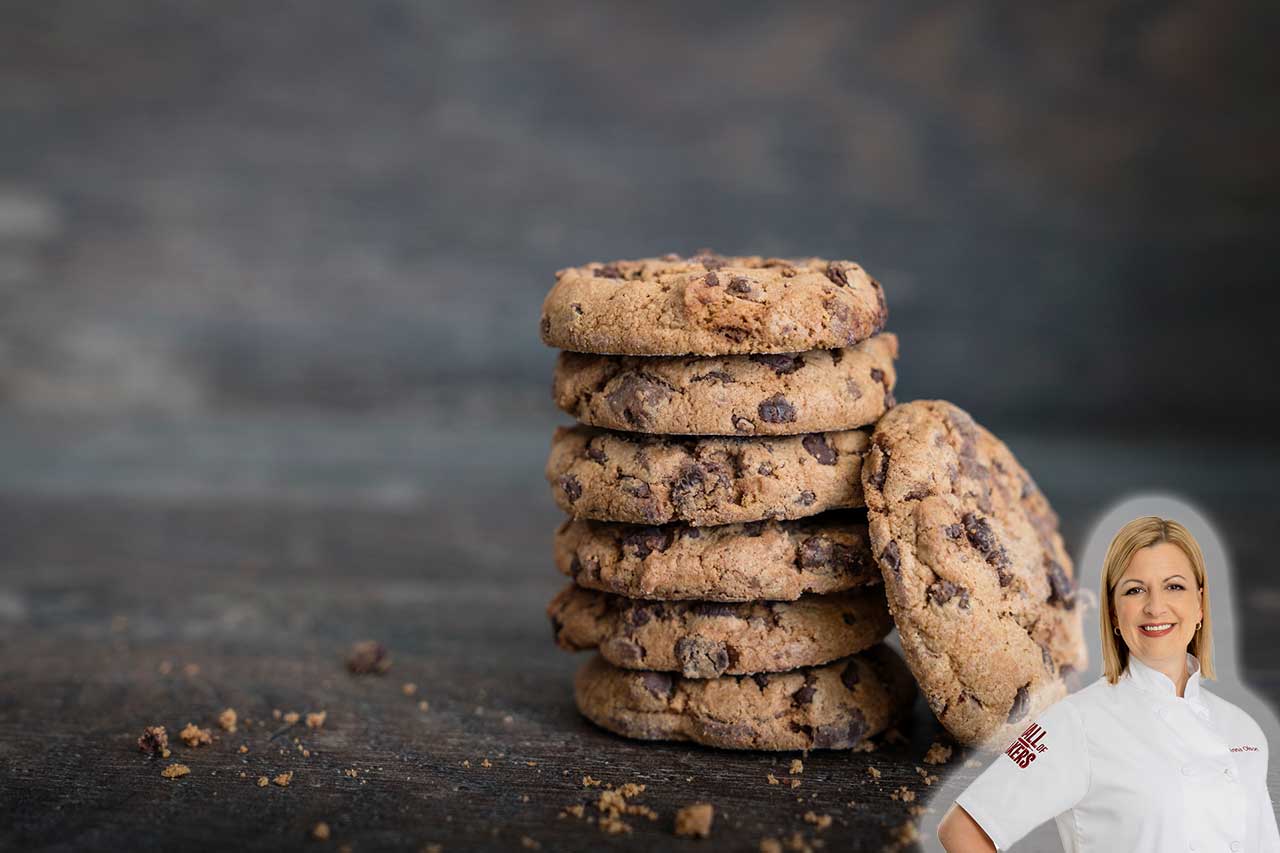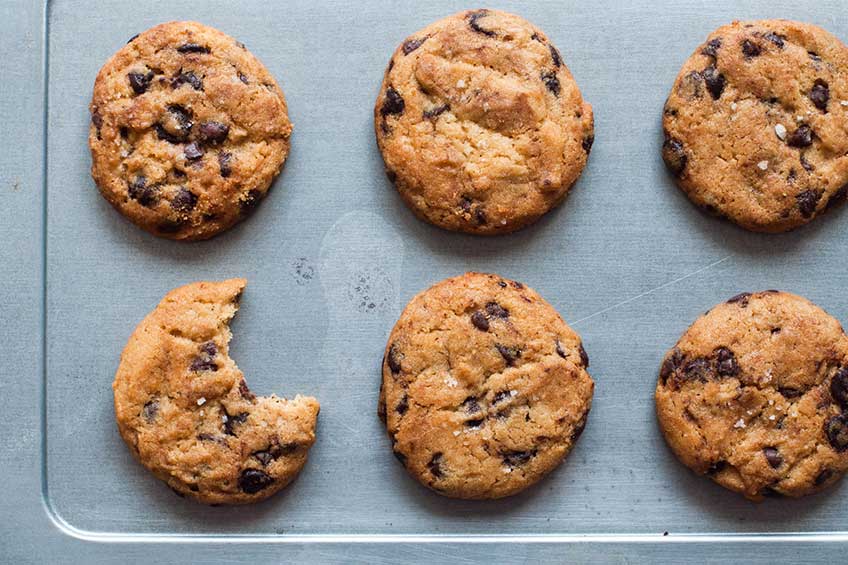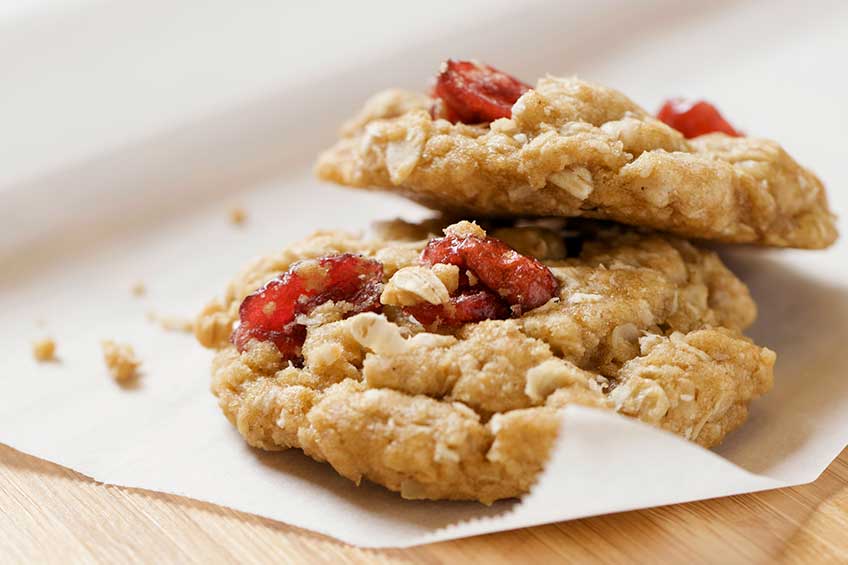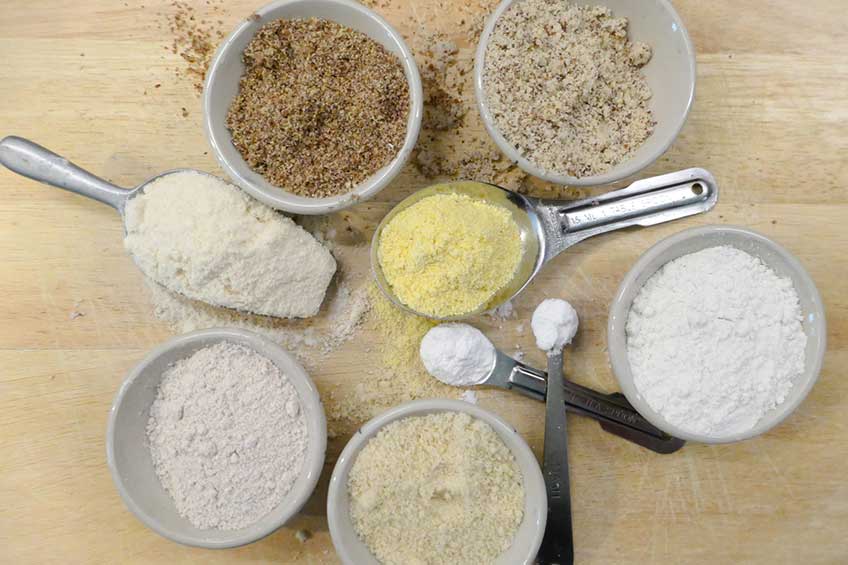
Whether you make it on a baking competition show like Wall of Bakers or even if your biggest critics are not big time chefs, but the little fingers eagerly awaiting the latest goodie coming out fresh and hot from your oven (or air fryer!) – being in the bakers’ circle is a good thing. This is why we’re sharing some of Anna Olson’s coolest tips for some hot baking topics that are making their rounds on our social media channels and our inboxes.

Baking cookies at high-altitude
Q: Keith from Calgary is baking at a 3,100-foot elevation and he’s tried everything to get Anna’s cookies to turn out perfectly, to no luck. What is he doing wrong?
Anna: Keith, you have asked a very good question about baking at high-altitudes, and thank you so much for trying all my recipes, and I’m glad you’ve had such good success, but hearing that you’re stuck on my cookies?
Interestingly, I learned how to bake at high-altitude. I went to cooking school in Vail, Colorado, so I baked at 10,000-feet above sea level and I learned very quickly how different things can behave. So in a nutshell, and you probably already know this, Keith, the difference in baking at a higher altitude is that there is a lower air pressure, so there’s less resistance when things rise and bake in the oven. And so what that means is you have to compensate a little bit for that change in air pressure compared to sea level. Step number one, and this applies to the cookie, you want to reduce your leavening agents. So that would be the baking soda. It’s a small amount for the cookie recipe. Cut it in half. Number two: typically with muffins and cakes, you want to increase your moisture content so you add a little extra liquid.
Related: Here’s Anna Olson New Favourite Chocolate Chip Cookie Recipe
That gives time for all your other ingredients to sort of melt and bond and build structure as they bake in the oven. In the case of cookies, because you don’t have milk or cream, I would reduce the flour by a little bit. So for a batch of cookies, if you’re using my recipe that I believe is a cup and a half of all-purpose flour, take away two tablespoons to start (more volume builds up because the egg now is going to take up a little more space proportionately to the flour, and that might build some volume in the cookie). And then part two is you’re dealing with time and temperature in the oven. In some cases, increasing your oven temperature can be the key because it gets everything to lift and then bond together faster because you’re competing with the low air pressure. Cookies take such a short time to bake. So if you’re going to try to increase the oven temperature just by no more than 25 degrees. So if at 350°F, set it to 375°F but set that time or take a look at them at seven and eight minutes. And you may find they’re already done and such. And if that’s not working, then actually backpedal, lower your temperature and give those cookies longer to bake.

Cookies stuck on parchment paper
Q: Why is my cookie stuck on parchment paper?
Anna: So, you’re having trouble with your cookie sticking to parchment paper? Yet parchment paper is designed with a silicone coating precisely so that things don’t stick on it. So I’m wondering if maybe you’re trying to lift your cookies too soon from right out of the oven when cookies and baked goods come out of the oven? They’re really, really fragile because all the ingredients are sort of bonding together. And so even just two to three minutes to let your cookies cool before you remove them, you might find you have an easier task and they’ll come away easier without falling apart, breaking or potentially sticky.

Ingredient substitutions
Q: How do you substitute all-purpose flour for whole wheat flour?
Anna: If you’re trying to add more whole grains to your baking, replacing all-purpose flour with whole wheat flour is a common wish and pretty easy to do to a point. The general rule is you can replace up to 50 per cent of your all-purpose flour with whole wheat flour without really compromising the taste, texture or the lift of your baking (the lift being how it rises when it goes into the oven). Once you start increasing that whole wheat flour, if you want to do 100 per cent replacement of all-purpose flour, it can change the texture a little bit. So muffins could be a little more dense, cookies a little heavier because the wheat bran and germ that’s in whole wheat flour, which is what’s good for us, actually interferes with the protein development that holds those baked goods together. In which case, you want to start playing with the recipe a little bit or look for recipes, not just mine, but everybody’s that are designed and tested using 100 per cent whole wheat flour.
Photos courtesy of Getty Images.
